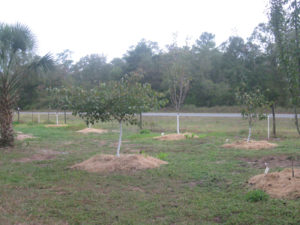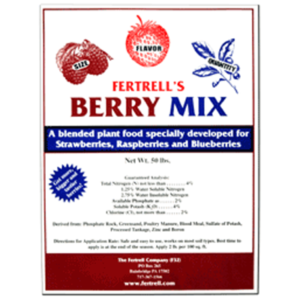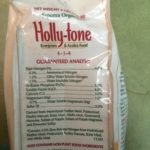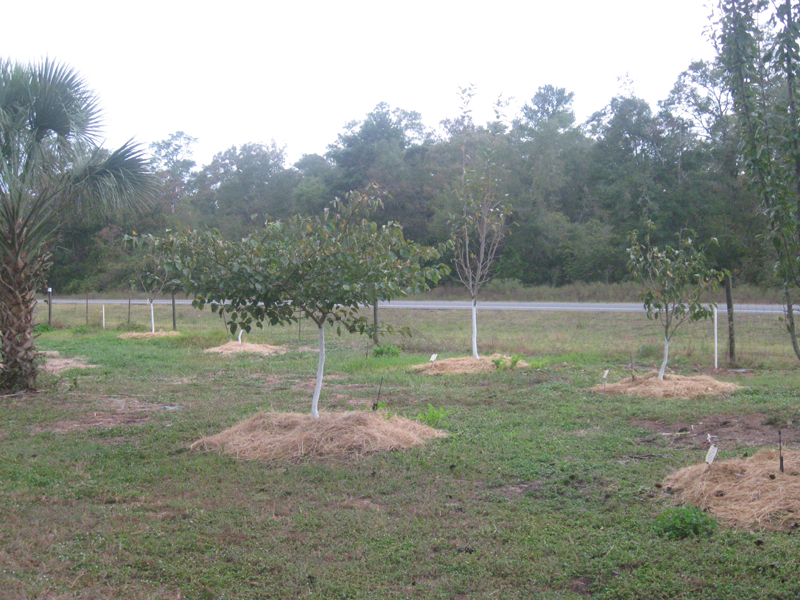[printfriendly]

There is a big push to get people using more organic fertilizers, and for good reason. We’re seeing our lakes and streams polluted with phosphates and choked with algae from overuse and little understanding of how and what kind of fertilizers cause these problems. Does this mean we should stop using fertilizer? I think not; feeding your plants is necessary to their survival. Learning a little about how fertilizers work is really the key to helping with this problem.
Fertilizer comes in two forms, chemical and organic. Chemical fertilizers release their nutrients with water. So every time you water your plants, it feeds them and whatever your plant can’t absorb runs off and pollutes the aquifer. These fertilizers give you instant results but must be used wisely. Try to buy the slowest release mix you can find. Look for one that says it will last for at least three months. Anything less than that will wash out in a heavy rain storm and leave your plant hungry and the aquifer polluted. What’s in it is important as well, phosphates are a key pollutant, so find a mix with a low middle number. Make sure your fertilizer has trace elements; plants need iron, zinc, manganese and magnesium to stay strong.
Organic fertilizers are released by the bacteria and fungi in the soil. These are the gentler, more earth friendly solutions to feeding your plants. People gardening in poor sandy soils, or areas that don’t have rich top soils, often get mixed results with this type of fertilizer, and are sometimes unhappy as they don’t see the instant results like they do with chemical fertilizers.  To get the best results with organic fertilizers you need to build up a good healthy colony of soil bacteria and fungus that can release the organic fertilizer you are applying. In sandy soils or areas with poor topsoil it’s best to use these fertilizers with manure or compost and mulch. A good practice is to give your trees a Fertilizer Sandwich. Spread your fertilizer on the soil under the canopy of the tree, then cover with an inch of manure or compost and finish with a couple of inches of hay or bark mulch. This Fertilizer Sandwich contains the complete package to feed the plant, as within the manure layer is the necessary fungus and bacteria to break down the fertilizer and the top layer of mulch will help keep the bacteria moist and well fed for an extended time.
To get the best results with organic fertilizers you need to build up a good healthy colony of soil bacteria and fungus that can release the organic fertilizer you are applying. In sandy soils or areas with poor topsoil it’s best to use these fertilizers with manure or compost and mulch. A good practice is to give your trees a Fertilizer Sandwich. Spread your fertilizer on the soil under the canopy of the tree, then cover with an inch of manure or compost and finish with a couple of inches of hay or bark mulch. This Fertilizer Sandwich contains the complete package to feed the plant, as within the manure layer is the necessary fungus and bacteria to break down the fertilizer and the top layer of mulch will help keep the bacteria moist and well fed for an extended time.
There are many brands and formulas of organic fertilizer on the market. We ran a study in our orchard on two popular brands; Espoma and Fertrell.  While equally well in results, we found Fertrell to be much stronger, requiring only half the amount of fertilizer to do the same job as Espoma. What is important is to carefully follow the directions on the fertilizer bag. Often organic fertilizers like Espoma will recommend rates like 12 cups for a tree that is 6 feet tall. They are not kidding folks; it takes that much fertilizer to get the results your tree needs.
While equally well in results, we found Fertrell to be much stronger, requiring only half the amount of fertilizer to do the same job as Espoma. What is important is to carefully follow the directions on the fertilizer bag. Often organic fertilizers like Espoma will recommend rates like 12 cups for a tree that is 6 feet tall. They are not kidding folks; it takes that much fertilizer to get the results your tree needs.
A couple of more things to know about fertilizer is the correct way to apply it and getting your soil at the correct pH to use the fertilizer. First you want to feed the plants entire root system. Look at your tree and notice the width of the branch canopy, the root zone reaches from the trunk to a few feet beyond that canopy, be sure to apply your fertilizer evenly over this area. If you are applying compost and mulch it should cover that area as well. For best results keep this area weed and grass free. Grass growing in the root zone area can rob your plant of the fertilizer you are applying.
 Soil pH is very important to getting your fertilizer to release in the soil. Acid loving plants like blueberries, camellias, hollies, and azaleas all need a lot of iron and sulfur in the soil it remain healthy. If your soil pH is too high (too much lime) then the iron is tied up and unavailable for release to the plant. Send a soil sample off through your County Extension Office and find out what your natural pH is. Most soils are easily adjusted with lime to raise the soil pH or sulfur and iron to lower the soil pH.
Soil pH is very important to getting your fertilizer to release in the soil. Acid loving plants like blueberries, camellias, hollies, and azaleas all need a lot of iron and sulfur in the soil it remain healthy. If your soil pH is too high (too much lime) then the iron is tied up and unavailable for release to the plant. Send a soil sample off through your County Extension Office and find out what your natural pH is. Most soils are easily adjusted with lime to raise the soil pH or sulfur and iron to lower the soil pH.
Always remember you are eating what your plant eats, so if you want healthy nutrient rich vegetables and fruits it pays to feed your plants well.

